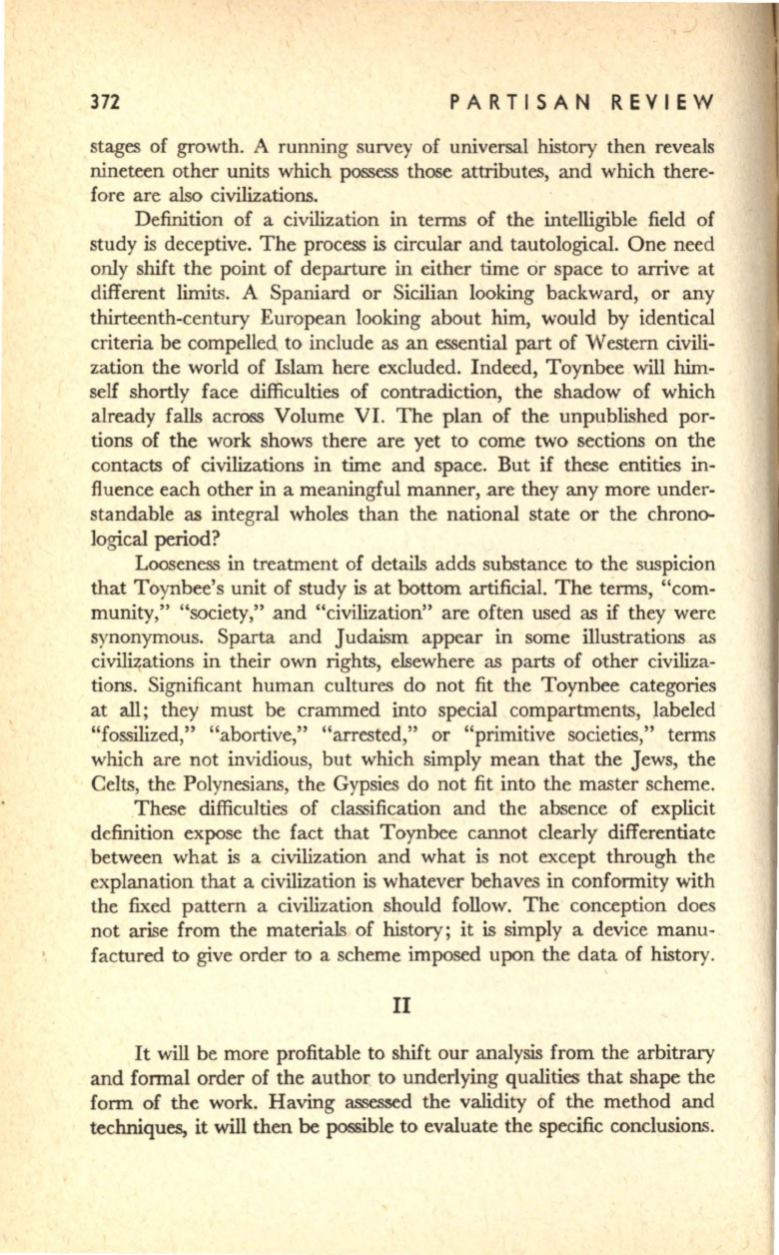
372
PARTISAN REVIEW
stages of growth. A running survey of universal history then reveals
nineteen other units which possess those attributes, and which there–
fore are also civilizations.
Definition of a civilization in terms of the intelligible field of
study is deceptive. The process is circular and tautological. One need
only shift the point of departure in either time or space to arrive at
different limits. A Spaniard or Sicilian looking backward, or any
thirteenth-century European looking about him, would by identical
criteria be compelled, to include as an essential part of Western civili–
zation the world of Islam here excluded. Indeed, Toynbee will him–
self shortly face difficulties of contradiction, the shadow of which
already falls across Volume VI. The plan of the unpublished por–
tions of the work shows there are yet to come two sections on the
contacts of civilizations in time and space. But if these entities in–
fluence each other in a meaningful manner, .are they any more under–
standable as integral wholes than the national state or the chrono–
logical period?
Looseness in treatment of details adds substance to the suspicion
that Toynbee's unit of study is at bottom artificial. The terms, "com–
munity," "society," .and "civilization" are often used as if they were
synonymous. Sparta and Judaism appear in some illustrations as
civilizations in their own rights, elsewhere as parts of other civiliza–
tions. Significant human cultures do not fit the Toynbee categories
at all; they must be crammed into special compartments, labeled
"fossilized," ".abortive," "arrested," or "primitive societies," terms
which are not invidious, but which simply mean that the Jews, the
Celts, the Polynesians, the Gypsies do not fit into the master scheme.
These difficulties of classification and the absence of explicit
definition expose the fact that Toynbee cannot clearly differentiate
between what is a civilization and what is not except through the
explanation that a civilization is whatever behaves in conformity with
the fixed pattern a civilization should follow. The conception does
not arise from the materials of history; it is simply a device manu–
factured to give order
to
a scheme imposed upon the data of history.
II
It
will be more profitable to shift our analysis from the arbitrary
and formal order of the author to underlying qualities that shape the
form of the work. Having assessed the validity of the method and
techniques, it will then be possible to evaluate the specific conclusions.


